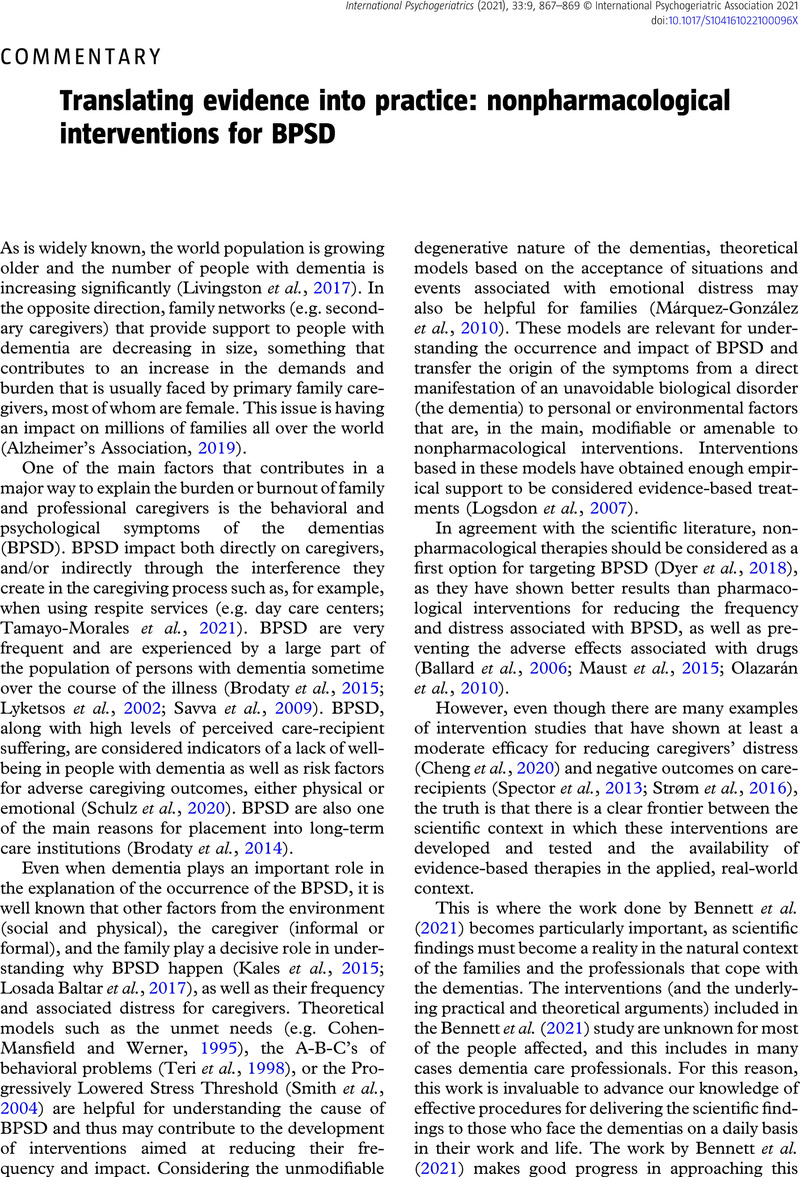Crossref Citations
This article has been cited by the following publications. This list is generated based on data provided by Crossref.
Pachana, Nancy
and
Pachana, Nancy A.
2021.
Using implementation science to progress psychogeriatrics.
International Psychogeriatrics,
Vol. 33,
Issue. 9,
p.
847.
Molteni, Valentina
Vaccaro, Roberta
Ballabio, Roberta
Ceppi, Laura
Cantù, Marco
Ardito, Rita B.
Adenzato, Mauro
Poletti, Barbara
Guaita, Antonio
and
Pezzati, Rita
2022.
Doll Therapy Intervention Reduces Challenging Behaviours of Women with Dementia Living in Nursing Homes: Results from a Randomized Single-Blind Controlled Trial.
Journal of Clinical Medicine,
Vol. 11,
Issue. 21,
p.
6262.
Warren, Alison
2023.
BPSD reconsidered: diagnostic considerations to preserve personhood in persons with dementia.
Frontiers in Dementia,
Vol. 2,
Issue. ,
Hillebrand, Mareike C.
Weise, Lisette
and
Wilz, Gabriele
2023.
Immediate effects of individualized music listening on behavioral and psychological symptoms of dementia: A randomized controlled trial.
International Journal of Geriatric Psychiatry,
Vol. 38,
Issue. 3,
Bayram, Serap
2024.
Effects of reminiscence therapy on cognition, agitation, and quality of life in older adults with dementia receiving long‐term care.
Psychogeriatrics,
Vol. 24,
Issue. 2,
p.
155.
O'Connor, Claire MC
Poulos, Roslyn G
Heldon, Michelle
Preti, Costanza
Beattie, Elizabeth
and
Poulos, Christopher J
2025.
Implementing Arts on Prescription at Home for People Living With Dementia: A Hybrid-Effectiveness Feasibility Study.
Journal of Geriatric Psychiatry and Neurology,
Vol. 38,
Issue. 2,
p.
115.



